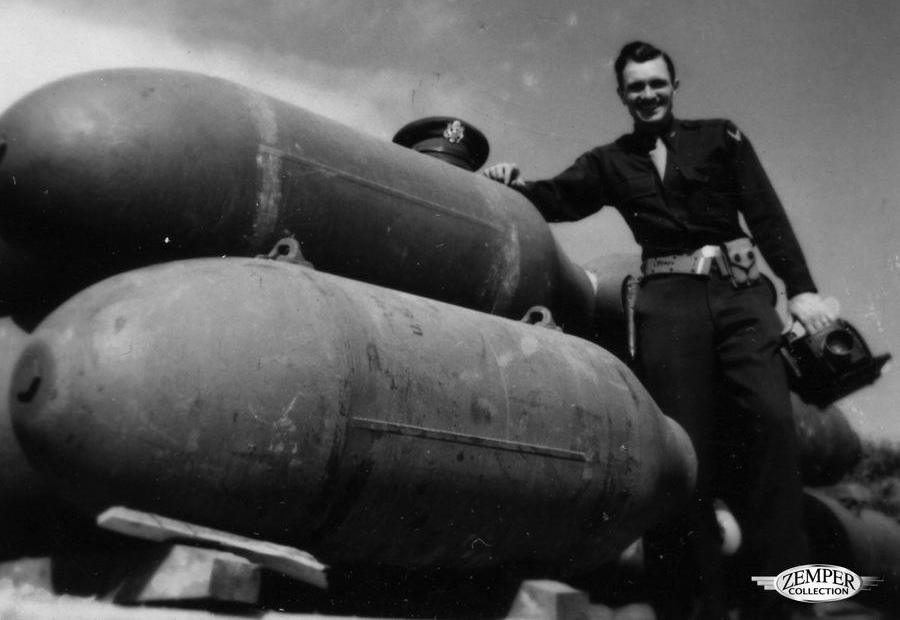Almost 75 years after he was discharged, Duane Zemper, 96 – accompanied by his son, Eric – is looking forward to touring the Pentagon along with other historic sites as part of the reunion of Zemper’s old Army Air Corps unit, the 457th Bombardment Group, which is scheduled to take place in Washington DC.
Zemper was an aerial photographer during World War II. This tall, dark handsome man with a pencil mustache and a penetrating stare was one of the elite band of men who flew with the bomber strike force, facing the same dangers as the airmen, but with the specific duty of recording the raid and the damage caused by the bombs.
After each raid, he would run from the plane with his precious film, develop it as quickly as possible and get the results to the High Command who would then review the photographs for damage caused by that bombing mission. His photographs would provide the intelligence required to decide on future missions depending on the amount of damage noted after the raids.
These aerial photographers are a little-known group of heroes from World War II. During the war, Zemper worked with a staff of 21 men to produce images that are still with us today. While the technology of today means that drones and small portable cameras are commonplace on the front line, there were no such luxuries in WWII. There the photographer, armed only with his camera, took to the air with the bomber crew and the record of the raids that he returned with, were a vital part of the intelligence collected and evaluated during battle.
The life expectancy of the aerial photographer was as poor as that of the other bomber and fighter crews. More than 57,000 US airplanes were shot down during the course of the war. In just over a year, from 1944 to the end of the war, the unit Zemper was attached to lost 336 men, almost one every day. Of these, 286 were killed on active duty and almost 100 were wounded with many others captured as prisoners of war. Their fascinating history can be found at http://www.457thbombgroup.org/ .
At the reunion many hair-raising stories will be shared and the camaraderie of 75 years ago will be rekindled.
Zemper’s own story concerns the day that his son was born. He was taking part in a training mission and was busy filming out of the open bomb bay when the bomber hit an air pocket. Zemper was flung out of the plane hitting his head, but he managed to cling to his camera which was hung up on the doors. He was pulled back inside by the crew to the news that not only had he survived being thrown out of the plane but he was the proud father of a new son.
Zemper was very aware of how important the motion picture film and still photographs from each mission were, both to the High Command and to the men he flew with. Bomber pilots were required to fly 25 missions before being granted extended leave so each record was important as a milestone to a period of leave and relief from the unending stress of flying missions into Germany. “If there was no photography, there was no record of the mission,” said Zemper.
After the war, Zemper worked as a professional photographer and he has captured a great deal of the history of Howell, Michigan. His photographs have pride of place in the Howell Carnegie District Library. Eric, Zemper’s son, believes that some of his father’s work may have been shown in television programs such as “12 O’Clock High”, when the footage was declassified after the war.
Zemper and his colleagues provided vital intelligence that directly impacted the course of the war. Due to his bravery and the bravery of his colleagues, bombing missions could be accurately planned and executed.
